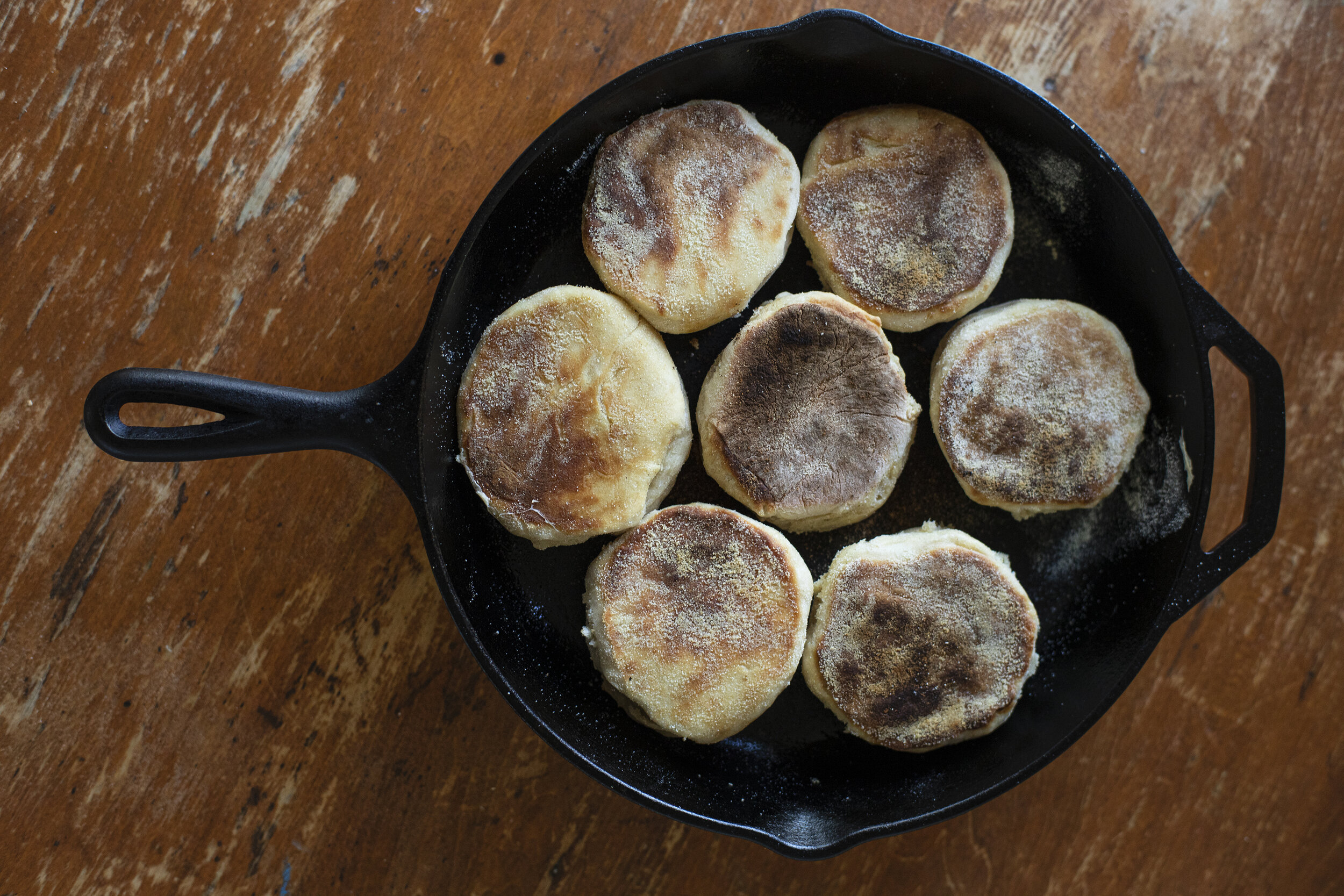Sourdough Brioche Buns
After a lot of trail and error I’m finally feeling pretty good about these brioche buns. I extended out the fermentation cycle which makes the process a bit longer, but it pays off with the end result - a lighter, airier brioche that is perfect for sandwiches, burgers, or French toast. Video of the process below.
Ingredients
250 g bread flour
90 g eggs (about two medium sized eggs)
50 g butter (cubed)
50 g white sugar
45 g water
5 g salt
100 g active starter
1 more egg for brushing on before bake
*This recipe is a small batch of 4 buns. Multiply according to how many you want.
From start to finish this takes about 44 hours total.
Directions
9am Day 1- Feed/activate your starter. I won’t go into too much detail here about starters, levains as there are many other amazing resources already available online - but I find that it is essential for this recipe that you are working with a very active starter when you get to the next step of mixing.
12pm Day 1- Mix all of the ingredients together in a stand mixer. It is possible to do this by hand but it will take a lot more time and effort to achieve the same result as the mixer. With the butter, eggs, and sugar this dough really needs to be worked together more than a regular loaf of bread. Start off on slow and gradually increase the speed for 15 minutes, periodically scraping the edges of the bowl with a rubber spatula. The dough will be somewhat sticky, but after 15 minutes it will be smooth, homogeneous, and should hold together nicely.
12:15pm to 8:00pm Day 1- Transfer to a metal proofing bowl and cover and leave out at room temperature for the first fermentation cycle. Key here is that the dough should be folded 4 times over the course of this cycle to develop the gluten and structure of the bread. After mixing I will wait about 30 minutes before doing the first fold (by hand). Let the dough relax again for about another 30 minutes and do the next fold, and so on. Keep the dough covered when not folding it. It will get progressively easier, smoother, during each fold.
8pm Day 1- Transfer the dough to the refrigerator for an overnight cold ferment.
8am Day 2- Remove the dough from the refrigerator and leave at room temperature for about 10-15 minutes. This will give it a little time to loosen up and not be so stiff coming out of the refrigerator. Gently dust a work surface with flour and dump the dough out. Divide into 4 equal pieces. Gently pull the edges of each piece out and fold over on top of itself. Rotate as you go and you’ll begin to form a small, smooth, ball of dough. Work carefully not to tear the dough. Turn the ball over and continue to shape the dough, working the edges downwards and folding underneath. The video I’ve made will help with visualizing this part of the process.
8:15am to 8:00pm Day 2- Lightly flour a tray and set your dough balls inside, leaving a few inches of space between to give them room as the continue to proof. You’ll need to cover them during this step. You also don’t want the dough pressing against whatever cover you’re using. If using plastic wrap or foil I will place an object in that is taller than the edges of the tray so that it creates a tent. Since I’m not working in a professional kitchen setting and don’t have access to equipment to control humidity I will ball up some wet paper towels and stick them in the edges of the tray during this part of the process to keep some ambient humidity as they proof at room temperature.
8:00pm Day 2- Transfer the entire covered tray into the refrigerator for the final cold phase of proofing.
7am Day 3- Remove from the refrigerator and allow to come to room temperature for about 30 minutes. Set your oven to 425F. I bake directly onto a baking stone for this recipe and use parchment paper as a barrier between the buns.
Transfer each dough ball (carefully so they keep their shape) onto parchment paper. Brush each dough ball with egg wash. Using a bread lame, slash the tops of each ball in an X pattern. Using a pizza peel, or large spatula, transfer to the baking stone. I like to use a big pizza peel, so all my dough balls are on the same piece of larger parchment paper. You could just as easily cut individual pieces of parchment for each dough if necessary.
Bake at 425F for 15 minutes until golden brown. Remove from the oven and allow to cool for at least 15 minutes before slicing.
For burgers and sandwiches I like to toast these in a lot of butter straight onto a cast iron pan, with a lid so they steam a little while they toast up. You’ll definitely miss out if you skip this step.
The Smash Burger
This burger uses a 60% venison 40% ground pork mix but would be just as good using 100% beef. The patties were pressed out between two sheets of parchment and kept cold until ready to cook. They’re seared on a hot pan or griddle until a strong crust begins to form. I flip these only once, add the cheese, caramelized onions, and char the second side. Because they’re so thin you’re not worrying about them being rare or medium rare. The juiciness will come from the rendered fat, melted cheese all coming together with the amazing crispy crust. Slide them onto a buttered and toasted bun, slathered with whatever sauce you like, press it down and enjoy.
Venison smash burger with caramelized onions, cheddar and special sauce.
Pork cutlet, micro-greens, lemon vinaigrette, aioli, pickled red onions.














































